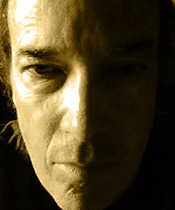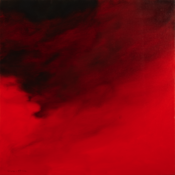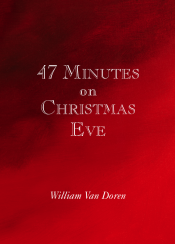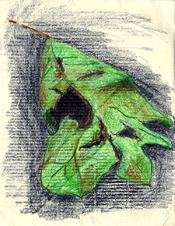Poe, the Ragged Mountains, and a Raven
While reading about Edgar Allan Poe’s “The Island of the Fay” (for yesterday’s post), I wondered about the source for the story’s setting. According to a Wikipedia article, another Poe story (“A Tale of the Ragged Mountains”) is “the only one of Poe’s stories to take place in Virginia.” I doubt very much that this is true.
“A Tale of the Ragged Mountains” might be the only Poe story set explicitly in Virginia, but considering Poe’s biography and where he lived at different times in his rather brief life (only 40 years), these low but rugged mountains emerge as a compelling candidate for the wild landscape that may have influenced several of his writings.
A well-researched article on Poe’s one year at the University of Virginia in Charlottesville reports that “in the afternoons, Poe was reputed to take long solitary walks through the nearby hills ...” In “A Tale of the Ragged Mountains”, Poe gives this habit to his main character. He would
set forth alone, or attended only by a dog, upon a long ramble among the chain of wild and dreary hills that lie westward and southward of Charlottesville, and are there dignified by the title of the Ragged Mountains.
Poe later has his character say that “when I left Charlottesville ... I bent my steps immediately to the mountains” – this is probably what Poe himself was once in the habit of doing.
In “The Island of the Fay,” the place where the narrator walks is described in a manner very reminiscent of his account of the Ragged Mountains.
It was during one of my lonely journeyings, amid a far distant region of mountain locked within mountain, and sad rivers and melancholy tarn writhing or sleeping within all – that I chanced upon a certain rivulet and island.
Poe’s ‘fancy’ could take something very small and seemingly insignificant – like a piece of sycamore bark floating by – and blow it up into something central to a story. There is every possibility that the ‘river’ where “Fay” is based indeed was nothing more than a ‘rivulet’, and the island perhaps not much more than a typical small feature of a Virginia creek, no more than a few meters from end to end. Setting off from the university “southward and westward” as he says, and following the Ragged Mountains, Poe would encounter the main branch of Moore’s Creek, which today feeds a reservoir near the university. Traveling further south, he’d reach the Hardware River; either stream would have been quite suitable as the basis for “The Island of the Fay.”
Based on the other places where Poe spent his adult life – Philadelphia, New York and Baltimore, with a military assignment to Charleston, South Carolina – it seems likely he would have become familiar with territory like that in “The Island of the Fay” (and perhaps even the setting of “The Fall of the House of Usher”) in the Ragged Mountains. Another possibility might be the area near West Point, where he spent about eight months trying mightily, and finally succeeding, to get himself kicked out of the U.S. Military Academy. And of course there’s the fact that he was brought up during part of his childhood in Scotland and England, and was always perfectly capable of simply making up his own worlds. But I suspect the Ragged Mountains provided a reserve of impressions that he drew upon for ‘wild’ scenery.
An aside: Having just recently written about the possible meaning of ‘Indian Summer’ and also the prevalence during that time of a combination of “sun, dust, smoke and shadow – a medium that contains and conducts autumn” – I enjoyed encountering Poe’s reference, in “A Tale of the Ragged Mountains,” to
a dim, warm, misty day, toward the close of November ... during the strange interregnum of the seasons which in America is termed the Indian Summer
and his description of
the thick and peculiar mist, or smoke, which distinguishes the Indian Summer ... this pleasant fog
Of course, some people, influenced by malicious, largely untrue tales disseminated about Poe during his lifetime, may think I’m seeking corroboration from an addicted madman. Well, Happy Halloween to them.
Finally, even further aside. I’ve written quite a bit (here, here, here and here) about my uncle, the late photographer and commercial filmmaker Del Ankers. Getting a gift for my uncle Del was the closest thing we knew to trying to find something for the fabled ‘man who has everything’. The D.C. studio/home of Del and my aunt Elizabeth was a marvel to my siblings and me, filled with exotic things like glass-topped tables, curved, leather-covered sofas, fresh fruit set out in bowls (and you were actually encouraged to eat it), sumptuous atlases and coffee table books on the aforementioned tables, not to mention all the photo stuff in the studios. The best things were the crazy toys on Del’s desk – not toys for us, souvenirs and amusements for him.
I only ever managed to find two or three things worth giving Del for his collection. One of them dates from just a few years ago, a toothpick dispenser I also just had to get for myself. Works great. And it can close our chapter on Edgar Allan Poe.
 Saturday, October 31, 2009 at 07:07PM | by
Saturday, October 31, 2009 at 07:07PM | by  BVD | tagged
BVD | tagged  Charlottesville Virginia,
Charlottesville Virginia,  Del Ankers,
Del Ankers,  Edgar Allan Poe,
Edgar Allan Poe,  Hardware River,
Hardware River,  Moore’s Creek,
Moore’s Creek,  Ragged Mountains,
Ragged Mountains,  University of Virginia,
University of Virginia,  indian summer,
indian summer,  “A Tale of the Ragged Mountains”,
“A Tale of the Ragged Mountains”,  “The Island of the Fay”,
“The Island of the Fay”,  “The Raven” | | Comments Off
“The Raven” | | Comments Off 






